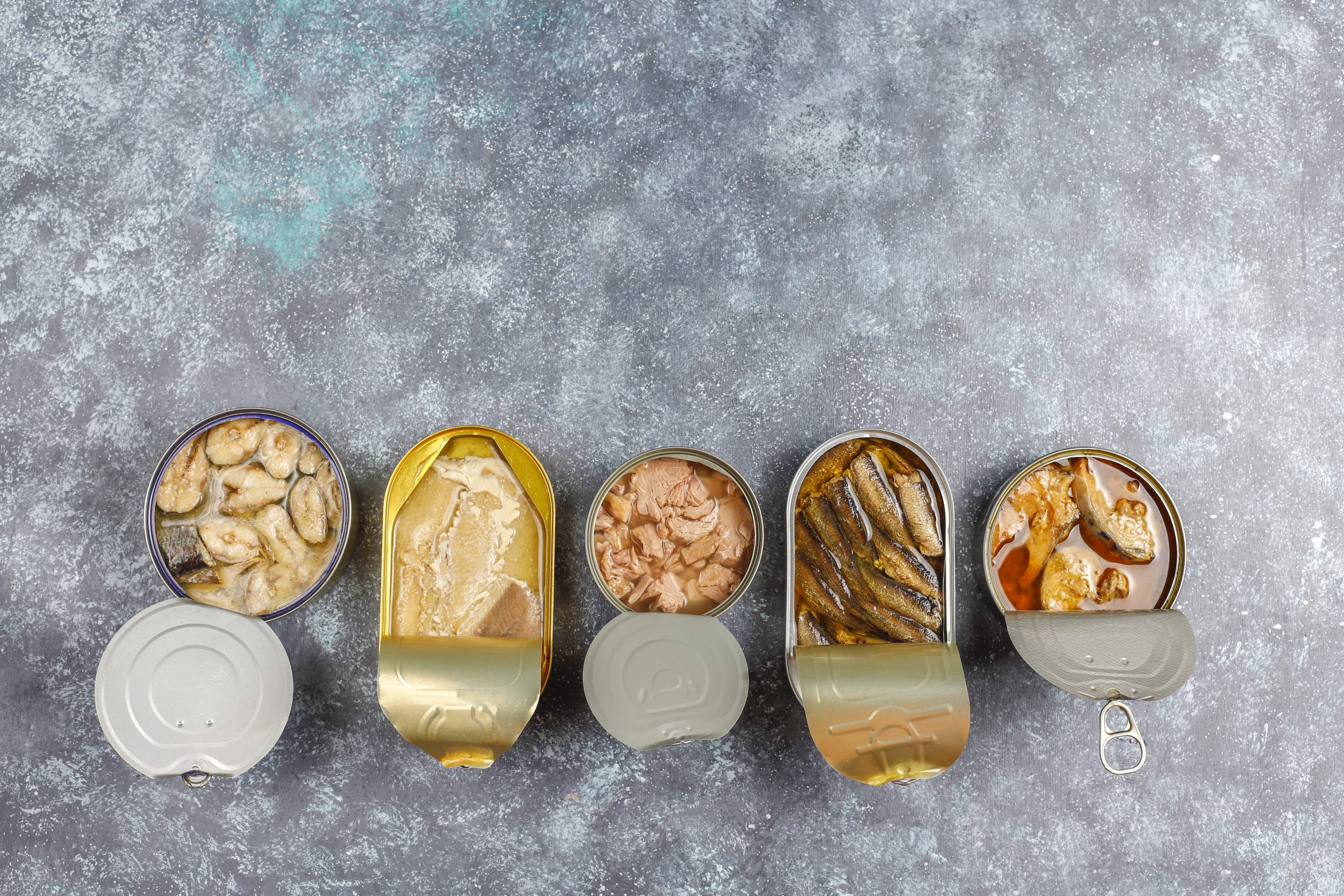You might be wondering, “Isn’t tinned fish and canned fish the same thing?” Well, not quite. While they both involve preserving fish in a sealed container, there are subtle differences between the two methods. In this article, we will explore the unique characteristics of tinned fish and canned fish, from their production process to their nutritional value. But that’s not all. We’ll also discuss the benefits of sustainably caught fish, the convenience of tinned fish, and the low mercury content in certain varieties. So, if you’re looking to broaden your knowledge on seafood options or seeking a quick and nutritious meal, this discussion will provide you with valuable insights into the world of tinned and canned fish.
Definition and Purpose of Tinned Fish
Tinned fish refers to seafood that has been processed, sealed in airtight containers, and heated for sterilization, ensuring its long shelf life and preservation. Tinned fish is preserved through various methods, including pressure cooking and heat-based sterilization. These techniques eliminate microorganisms and maintain the freshness of the fish for up to five years. Tinned fish offers a diverse range of flavor profiles, reflecting the cultural diversity of different regions. From spicy chili pepper-infused sardines to smoky flavored tuna, there is something to suit every palate. In addition to their delicious taste, tinned fish also provide numerous health benefits. They are a rich source of protein, omega-3 fatty acids, and other essential nutrients. Tinned fish can be enjoyed straight from the can, making them a convenient and quick option for meals. They can be used in various cooking techniques, such as adding them to salads, pasta dishes, or sandwiches. With their long shelf life and versatility, tinned fish is a practical and flavorful choice for seafood lovers.
History and Origins of Tinned Fish
The history and origins of tinned fish can be traced back to the early 18th century when the preservation technique of canning revolutionized the way seafood was consumed and enjoyed. Here are five key points about the evolution, popularity, cultural significance, preservation techniques, and modern variations of tinned fish:
- Evolution: Tinned fish began with the canning of sardines in France, followed by Spain and Portugal. It quickly gained popularity and dominated the market in these countries.
- Popularity: Tinned fish became a staple in many households due to its long shelf life, convenience, and affordability.
- Cultural significance: Tinned fish played a significant role in the diets of coastal communities, providing a reliable source of protein and essential nutrients.
- Preservation techniques: The canning process involved packing fresh seafood into tin cans and heating them to sterilize and preserve the fish. This technique allowed for long-term storage without the need for refrigeration.
- Modern variations: Today, tinned fish comes in a variety of flavors, seasonings, and types of seafood. Artisanal brands offer gourmet options like smoked oysters and octopus in escabeche, catering to diverse culinary preferences.
The history and origins of tinned fish highlight its evolution, cultural significance, and the preservation techniques that have made it a popular choice for seafood lovers. The modern variations available provide a wide range of options for those seeking convenient and flavorful seafood options.
Nutritional Comparison: Tinned Fish Vs. Canned Fish
When comparing the nutritional value of tinned fish and canned fish, there are some key factors to consider. Both varieties offer nutritional benefits, including omega-3 fatty acids, calcium content, protein source, and vitamin D levels. However, tinned fish generally has higher levels of calcium due to the inclusion of bones. This makes it a good source of calcium for those who may not consume dairy products. In terms of protein, both tinned fish and canned fish provide a good source of this essential nutrient. Additionally, some varieties of tinned fish, such as canned salmon, offer high doses of omega-3 fatty acids and vitamin D. To help you visualize the nutritional comparison, here is a table:
| Nutrient | Tinned Fish | Canned Fish |
|---|---|---|
| Omega-3 Fatty Acids | High | High |
| Calcium Content | Higher | Lower |
| Protein Source | Good | Good |
| Vitamin D Levels | High | Varies |
Benefits and Advantages of Tinned Fish
Choosing tinned fish as a pantry staple offers numerous benefits and advantages for both convenience and nutrition. Here are five reasons why tinned fish is a smart choice:
- Advantages: Tinned fish provides quick and convenient nutrition, similar to fast food but with better health benefits. It is already cooked and safe to consume directly from the can.
- Nutritional Value: Tinned fish offers similar nutrition to fresh and frozen fish. It is a reliable source of protein and other important nutrients, including healthy omega-3 fatty acids. Canned fish, especially salmon, provides high doses of omega-3s and vitamin D.
- Portability: Tinned fish is highly portable and can be taken on-the-go. It is the perfect option for picnics, camping trips, or quick meals when you’re on the move.
- Convenience: Canned salmon has a longer shelf life, making it a convenient pantry staple. It can be easily incorporated into a variety of recipes, from salads to sandwiches, without the need for extensive preparation.
- Sustainability: Tinned fish, especially those made with sustainably caught seafood, promotes healthier ecosystems and fisheries. By choosing tinned fish, you are supporting sustainable fishing practices and reducing the strain on marine resources.
Sustainably Caught Fish and Tinned Fish
One important aspect to consider when discussing tinned fish is the sustainability of the seafood used in the canning process. Sustainable fishing practices are crucial for maintaining healthy fish populations and protecting the marine environment. By choosing tinned fish from companies that prioritize sustainable fishing methods, you can support ethical considerations and help preserve the health of our oceans. Sustainable fishing practices ensure that fish stocks are not depleted and that ecosystems are not harmed in the process. This has a positive environmental impact and helps maintain the delicate balance of marine life.
In addition to the environmental benefits, tinned fish also offers health benefits. Fresh fish is known for its high levels of omega-3 fatty acids, which are important for brain health and reducing the risk of heart disease. Tinned fish, when made from sustainably caught seafood, retains these health benefits. Furthermore, the canning process can enhance the flavor profiles of certain fish, making them even more enjoyable to consume.
Low Mercury Content in Tinned Fish
By considering the sustainability of the seafood used in the canning process, you can also ensure that tinned fish has low levels of mercury, making it a safe and healthy option. Here are some key reasons why tinned fish has low mercury content:
- Toxicity concerns: Mercury is a toxic heavy metal that can accumulate in fish. Tinned fish, especially varieties like sardines and mackerels, are low in mercury because they are lower on the food chain and less likely to accumulate heavy metals.
- Environmental impact: Tinned fish often comes from sustainable sources, which means it is harvested in a way that minimizes harm to the environment and reduces the risk of contamination.
- Health benefits: Consuming fish that is low in mercury is important for maintaining good health. Tinned fish provides a convenient way to incorporate seafood into your diet without worrying about high levels of mercury.
- Cooking methods: Tinned fish is already cooked during the canning process, ensuring that any potential contaminants, including mercury, are eliminated.
- Availability and accessibility: Tinned fish is widely available and accessible, making it a convenient option for those who may not have access to fresh fish or live in areas where fresh fish is limited.
Convenience and Culinary Uses of Tinned Fish
Tinned fish offers a wide range of culinary possibilities and convenient options for incorporating seafood into your meals. With its convenience and flavor, tinned fish provides versatility in recipes, making it a valuable ingredient in the kitchen. You can easily add tinned fish to salads, pasta dishes, sandwiches, and more, allowing you to create delicious and nutritious meals in no time. Additionally, artisanal options are available, offering a variety of flavors and seasonings like chili pepper, smoke, and olive oil. These unique flavor profiles can elevate your dining experience and add a gourmet touch to your dishes. Moreover, tinned fish is cost-effective compared to fresh seafood, making it a budget-friendly choice for seafood lovers. Not only is tinned fish convenient and affordable, but it also provides nutritional benefits. It is a reliable source of protein and other important nutrients, including omega-3 fatty acids. So, whether you’re looking for a quick and easy meal or want to explore new culinary possibilities, tinned fish is a convenient and flavorful option that delivers both convenience and taste.
Shelf Life and Storage of Tinned Fish
The shelf life and proper storage of tinned fish are important factors to consider for ensuring its quality and safety. To help you make the most out of your tinned fish, here are some key guidelines to follow:
- Shelf Life: Tinned fish can have a shelf life of up to five years when unopened. This makes it a great pantry staple that you can rely on for a long time.
- Refrigeration: Once opened, it is crucial to refrigerate canned seafood in an airtight container. This helps prevent spoilage and ensures that it stays fresh for up to three days.
- Spoilage Prevention: To maintain the quality of tinned fish, it should not be left at room temperature for prolonged periods. Proper storage in the refrigerator is essential to prevent spoilage and maintain its taste and texture.
- Proper Container: When storing opened tinned fish, make sure to transfer it to an airtight container. This helps preserve its freshness and prevents any odors from affecting other foods in the refrigerator.
- Storage Guidelines: Following these storage guidelines will help maximize the shelf life of tinned fish and ensure that it remains safe to consume. Always check the packaging for any specific storage instructions provided by the manufacturer.


